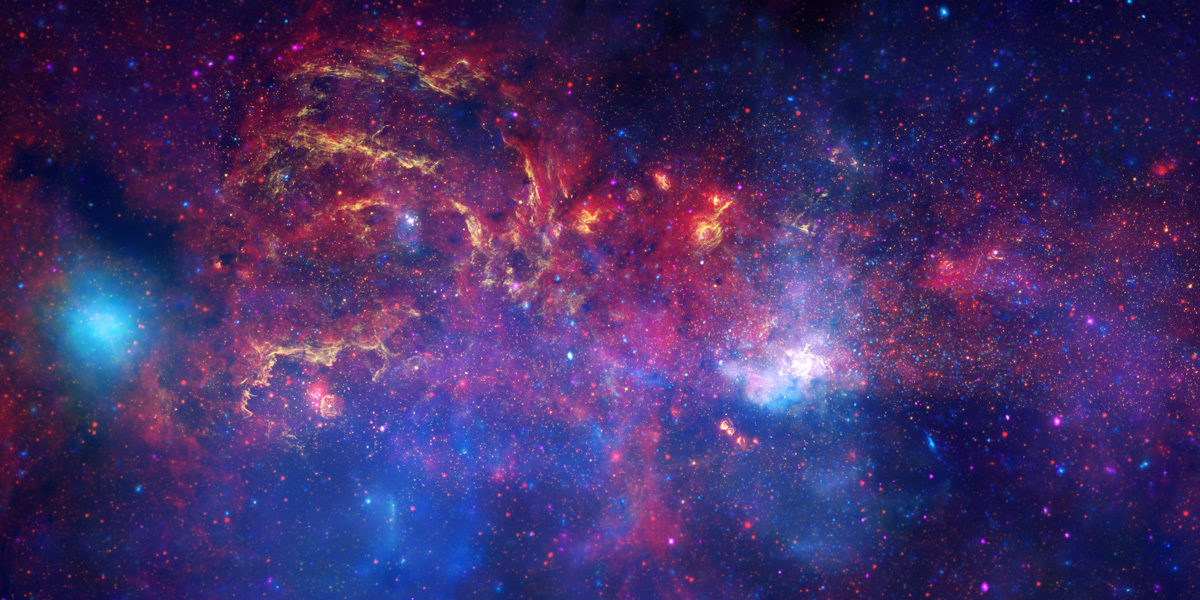Luisa Rebull • Aug 27, 2012
NITARP seeks educators for NASA astronomy research
Want to do real astronomy research with a NASA astronomer? Come play with us! Applications are due Sept. 21.
NITARP (National Aeronautics and Space Administration)/IPAC (Infrared Processing and Analysis Center) Teacher Archive Research Program) gets educators involved in authentic astronomical research. We partner small groups of educators with a mentor professional astronomer for a year-long original research project using NASA’s vast archives of astronomical data from space- and ground-based telescopes. In exchange, we ask educators to leverage this experience via providing professional development for their colleagues in their local school districts or elsewhere in their communities. It involves several trips for educator participants and their students to collaborate with scientists and present the research results, all of which are paid for by the program.
This program, to the best of our knowledge, is completely unique in the following important ways: (1) each team does original research using real astronomical data, not canned labs or reproductions of previously done research; (2) each team is encouraged to involve students throughout the process; (3) each team writes up the results of their research and presents it at an American Astronomical Society meeting (the AAS is the professional organization for astronomers in the US). Each team also presents the educational results of their experience in the program.
Most, but not all, of our educators are grade 8-13, but informal educators (people who work in planetariums and science museums) have participated as well. The kinds of educators we are looking for are those who already know the basics of astronomy, and are interested in learning exactly how astronomy research is conducted.
The application is available on our website NOW. Two of the most important things we are looking for in an application are (1) Can you hit the ground running? With only a year in which we conduct real research, we do not have time to start at the beginning. We need people who have some basic understanding of astronomy and are comfortable using their computer. (2) How are you going to share the experience? If you are a classroom teacher, the natural way to do this is to involve your students and conduct professional development workshops at your school, district, or meetings of local/regional/national teachers. If you are a non- traditional educator, then you really have to put some thought into this portion of the application. We know that if you get in, your plans WILL change as you progress through the program but you need to have a vision going in that makes it clear to us that you are committed to sharing the experience.
The specific program components (explained in more detail on the website and application) are:

Here are some selected recent quotes from our participants:
“The passion astronomers have toward the subject is contagious.”
“This experience completely changed my views on astronomy. The biggest shock for me was when I found out that astronomer don't actually sit in an observatory and look out a telescope all day.”
“One evening, while working on some homework, I had the realization that THIS WAS REAL. There is no right answer, in fact, no one knows the answer. I can't just go and ask someone the answer. It was like a light bulb went off and I experienced a feeling of excitement and also felt a little bit scared. I thought to myself -- Is this how astronomers feel about their work? It was a great feeling and exciting that I too am part of this now.”
Please visit our website, http://nitarp.ipac.caltech.edu, for more information and for the application itself (due Sept. 21)!
Support our core enterprises
Your support powers our mission to explore worlds, find life, and defend Earth. You make all the difference when you make a gift. Give today!
Donate

 Explore Worlds
Explore Worlds Find Life
Find Life Defend Earth
Defend Earth

